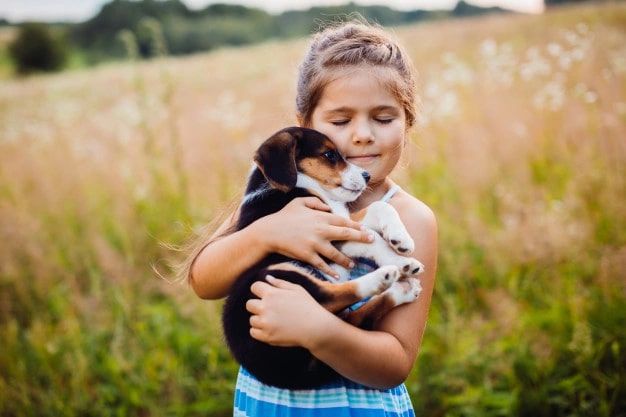It is desirable for children and pets to coexist in the same household, peacefully. Many people erroneously determine that as soon as they start having children that their pet needs to make their way to the local shelter. They worry that the cat or dog will not get along with the new child and it will develop into biting or scratching. This is not consistently the case and if you take the time to acquaint your pets to your children correctly, your kids and pets can get along in harmony.
One of the biggest worries that new parents have when it comes to pets in the home is how it will take to a baby. Most of the old wives tales such as cats sucking the breath out of babies simply are not true. On the contrary, many cats and dogs freely adopt a new child into the home and become passionately loyal and vigilant over the baby.
When you bring your baby home from the hospital, you should acquaint your pet to your new baby. Naturally, these introductions need supervision. Allow your cat or dog time to examine your child at his or her own pace. Make the meeting pleasant for your cat or dog. In many cases, your cat or dog will not give your baby a second thought. Permit your pet to adapt to the new situation on his or her own terms. When a baby comes to the house, it is an adjustment for everyone.
An additional thing that you might want to think about doing when you bring a baby into the home is to make sure that your cat or dog is properly prepared. This includes snipping your dog or cat nails. Your dog may want to put a paw on your baby. If his or hers nails are elongated and sharp, your dog may unwittingly scratch your infant. While you can rarely get rid of all pet hair from your house, if your dog or cat cut and brushed it will certainly help your house stay a little cleaner. Most new parents also are concerned about allergies. Actually, many studies have recognized that children who are exposed to pets from a very tender age, in reality have fewer pet allergies than children who are not exposed to pets.
One more good approach is to make certain that your pets don’t have access to your baby’s room during nap-time or at night without supervision. While your pet assumably means no ill to your child, pets are commonly nosy. A cat may leap into your infant’s bassinet, or in large dogs could easily push a bassinet or baby bed over. You should always oversee your pet when it is close to your new baby at all times. Above all, you should try to make sure that you are still spending quality time with your pet when available. This especially pertains to dogs, which are accustomed to playing in the grass and going for walks.
As your child grows, you should begin teaching your child proper pet etiquette. If your dog or cat has learned to appreciate your child, then your child as well needs to learn to respect your pet. Educate your child from a tender age that they should never tug or yank a cat or dog’s tail or ears. Your child can catch on to appropriate pet etiquette even at a very young age. You will also want to teach your child to respect your pet’s space. This includes making certain that your child comprehends that he or she should at no time wake a sleeping pet. This could compel your pet to become spooked and could result in biting or scratching.
In addition, you will want to make sure that your child understands to stay away from your pet’s food, water and litter box. Your child will be normally curious, so it is always desirable to give your pet some private room away from your child.
There are many things you can do to make sure that children and pets coexist in harmony. Your children and pets need to learn to respect one another from the very beginning. There is no excuse to get rid of your cat or dog just because you have a child in the household.
- Secrets To Dog Training – Kids And Pets Living Together - October 29, 2012
- Settling Credit Card Debt – How To Eliminate Credit Card Debt - October 6, 2012

